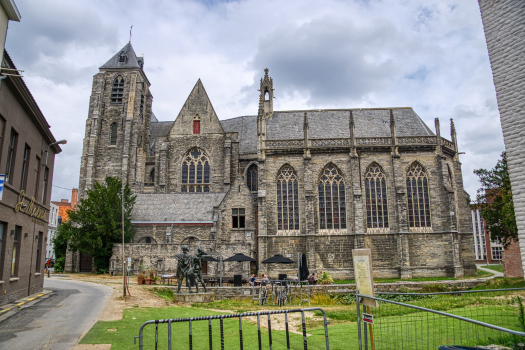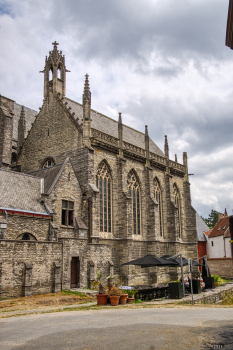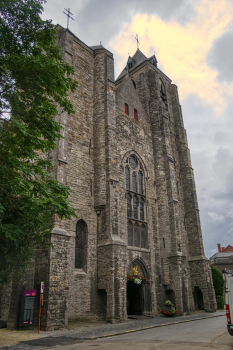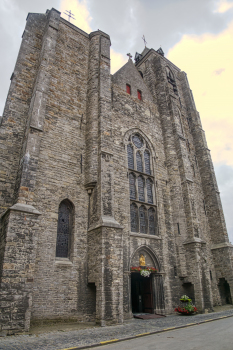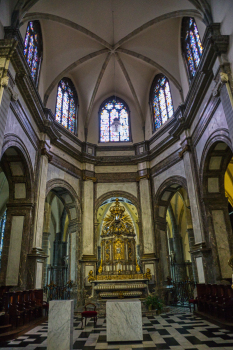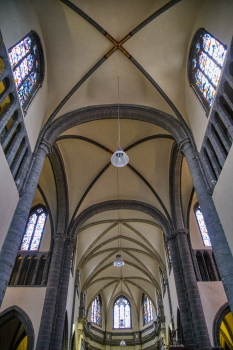General Information
| Name in local language: | Onze-Lieve-Vrouwekerk |
|---|---|
| Completion: | 1199 |
| Status: | in use |
Project Type
| Function / usage: |
Church |
|---|---|
| Material: |
Masonry structure |
| Architectural style: |
Gothic |
| Structure: |
Rib vault |
Awards and Distinctions
Location
| Location: |
Kortrijk, West Flanders, Flanders, Belgium |
|---|---|
| Coordinates: | 50° 49' 44.89" N 3° 16' 2.68" E |
Technical Information
There currently is no technical data available.
Excerpt from Wikipedia
The Church of Our Lady in a former Collegiate church in Kortrijk. The church was built in 1199 established by Baldwin IX, Count of Flanders. The church is situated in the historic city centre of Kortrijk.
Collegiate church
The church played a mayor role in the history of the County of Flanders. The original chapel was situated within the domain of the Counts of Flanders which was, except the part along the river Lys, fully walled. By request of Balduin IX and his wif Mary of Champagne the chapel was extended and became church. Inside a collegiate chapter with 12 canons in honour of our lady was installed by request of the Count. This chapter received papal approbation in 1203 by Pope Innocent III. Th count provided himself the Prebendaries and gave important relics, that came from Jerusalem with the crusades. The chapter was considered one of the most important of Flanders.
After the Battle of the Golden Spurs in 1302, which took place nearby on the Groeningekouter, the Flemish people hung 500 Golden Spurs of killed French knights on the ceiling of the church. Mercenaries took them away, in 1382 after the Battle of Roosebeke. They were replaced by replicas which can still be seen in the church.
In 1370, Count Louis II of Flanders had the Count’s chapel built to be a mausoleum for himself and in honour of Saint Catharine. The Chapel contains Frescos of all the counts and Governors of Flanders, during the Spanish and Austrian period.
During the 15th century, the church was renovated. The castle wasn't restored and the domain was parcelled out (O.L.V.-straat, Konventstraat, Guido Gezellestraat, Kapittelstraat and Pieter de Cockelaerestraat). Only the church, the Broeltowers and the Artillery tower are the remains of the former medieval castle.
19th century
In 1797, French troops invaded the city. They chased the canons out of their church and together with 12 convents, chapels and churches, the church was sold. The archives of the Chapter were brought to the city archives and other possessions were destroyed. Thanks to the concordat between Napoleon Bonaparte and Pope Pius VII, the church became the parish church of the parish of Our Lady. The canons never returned.
Interior
The church is currently still used as a parish church, most of the interior dates from the late Baroque period. The mean organ is sculpted in Rococo style, built by Van Peteghem. The church also contains other important treasures such as the altarpiece of Anthony van Dyck’s Raising of the Cross. This painting was commanded by the reverend canon Roger Braye, dating 1631. In the choir chapels we can find important graves and memorials. In the south a small door gives access to the gothic "Gravenkapel". After the Second World War some parts needed to be restored.
Text imported from Wikipedia article "Church of Our Lady (Kortrijk)" and modified on October 11, 2022 according to the CC-BY-SA 4.0 International license.
Participants
Currently there is no information available about persons or companies having participated in this project.
Relevant Web Sites
There currently are no relevant websites listed.
Relevant Publications
- (1962): L'église Notre-Dame de Courtrai. Presented at: Session. Congrès archéologique de France vol. 120 (1962), pp. 153-167.
- About this
data sheet - Structure-ID
20022982 - Published on:
20/09/2006 - Last updated on:
05/08/2022

